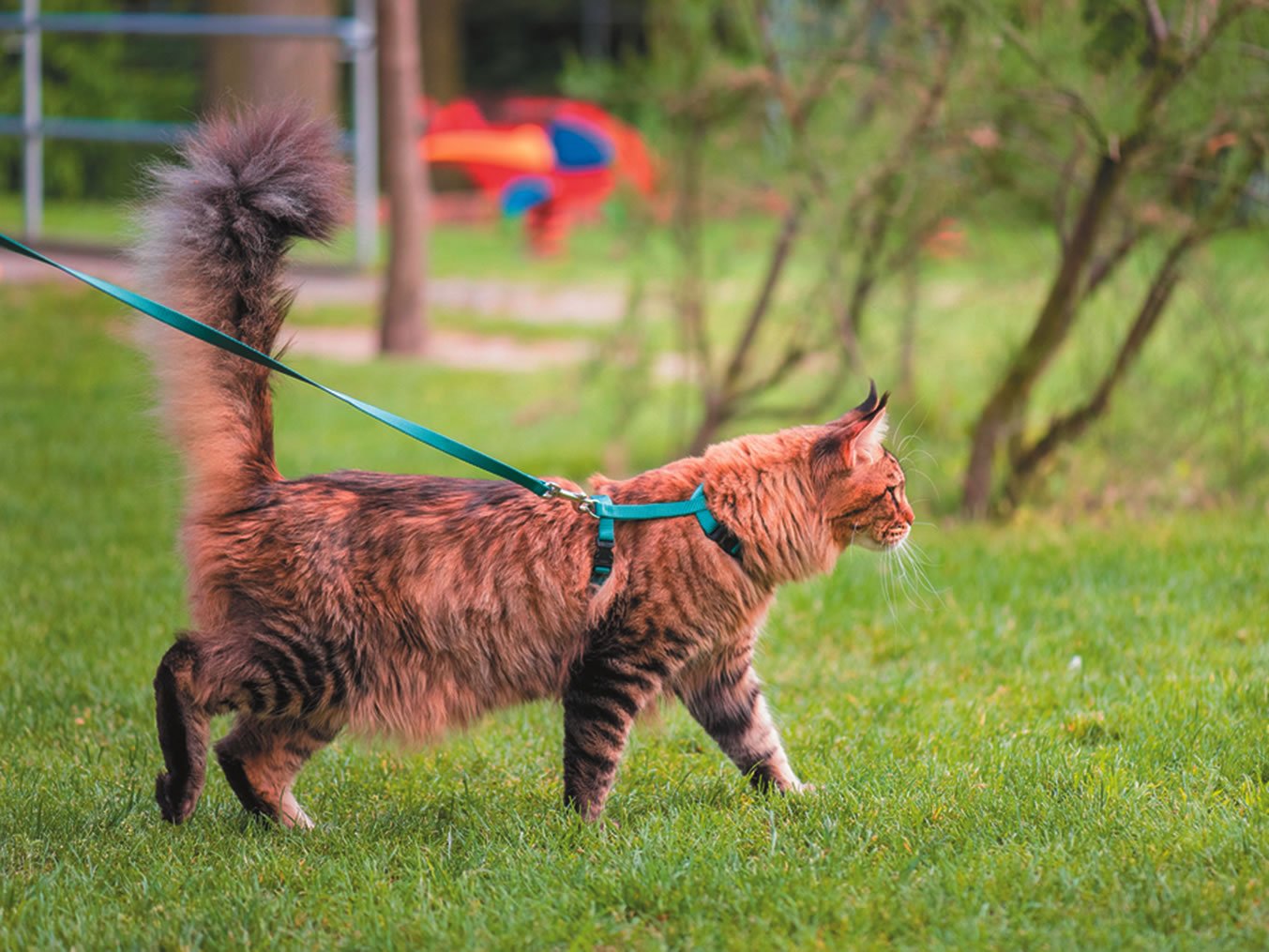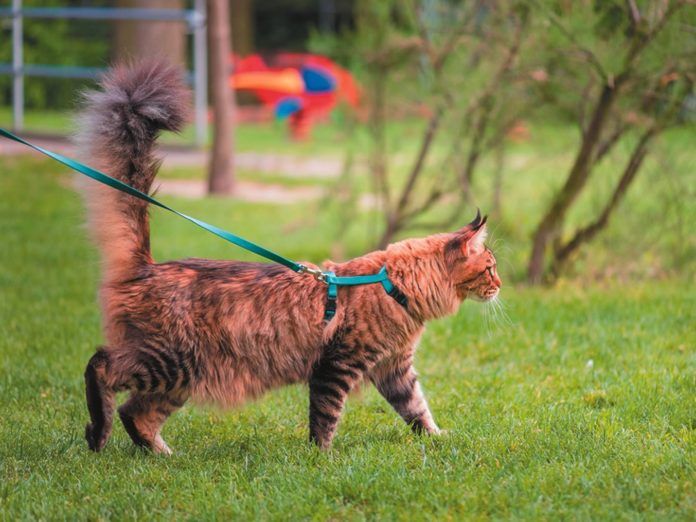© DenisNata | Bigstock


So many house cats want what we can’t safely give them: the great outdoors. Their natural instinct is to explore, yet cats allowed to roam outside face multiple risks, including preying wildlife, fast-moving cars, parasites, accidental poisonings, and disease. For instance, a cat can get feline leukemia or upper respiratory infections from tangling with a feral cat, or become poisoned from lapping up sweet-tasting anti-freeze or nibbling on chemically treated lawns.
But what if you and your cat could negotiate a happy compromise—a harness?
Harnessing your pet’s outdoor yearnings
A harness is not for every cat — some will never go for it — but for those who want to get outside and can be trained to accept one, a harness offers the best of both worlds: the ability to be out in the world and to do so tethered to you so he remains safe at all times.
Of course, cats are not dogs. For the most part, they’re not going to eagerly run up to you as soon as you shake the leash. Here’s what you need to know to allow your cat to grow accustomed to leash walking.
-Don’t start by trying to put the harness on. Simply leave it near favorite resting places for your pet to get used to the sight and odor.
-Give your cat favorite treats when he’s near the harness. Even put some delectable food on a dish next to it.
-Proceed slowly through the process of putting the harness on. Just place it gently over him one day, slip him through part of it the next, and so on.
-Get your cat used to walking indoors with the harness on, first without a leash attached, then with.
-Allow your harnessed and leashed cat to explore at your doorway. If he runs back in the house, that’s his choice. Try it a few more times — once a day. You don’t want to overwhelm him. And remember, no is no. This doesn’t have to work.
-Choose a quiet spot for your cat’s initial promenade outdoors. Bring him to a quiet spot in a carrier, if necessary.
-“Read” your cat for signs of overload.
Expanding his harnessed horizons
Once you’ve gotten your cat accustomed to peaceful exploration outdoors, you can try broadening his horizons bit by bit — if he shows interest in exploring further. Go gradually, the same way you did in introducing him to the harness. If he would rather spend his time outdoors checking out a specific blade of grass than walking, so be it. The primary aim of getting your cat outside is to enjoy fresh air and direct sunlight while making life a little more interesting. How he chooses to spend his time on the leash should be his call.
For cats who walk back their clamoringfor the outdoors
Unfortunately, some cats are simply too jittery by nature to follow through on their dream of walking around outside, even when provided with a harness and willing walker. But that doesn’t mean enjoying the outdoors is out of the question. Options include a carrier that lets your cat enjoy the light and fresh air without risk of harm. Just place it in an outdoor setting where you can keep watch over your pet.
Another alternative is an outdoor space referred to as a catio — a screened-in patio for cats. Such a screened area, rigged just for the cat, can be a nicely-sized space with a bed, bowls, and climbing apparatus. Even a simple outdoor window perch can be screened for your pet’s enjoyment.




